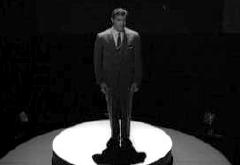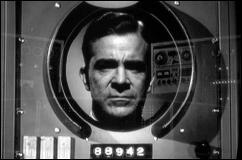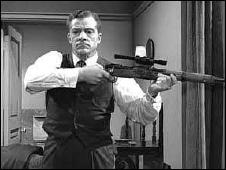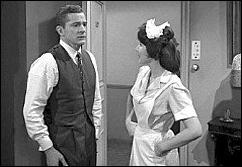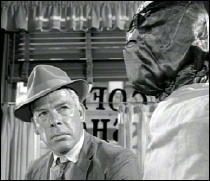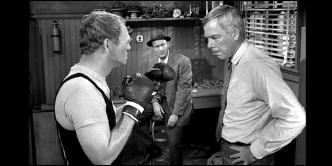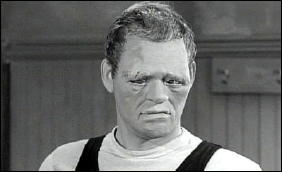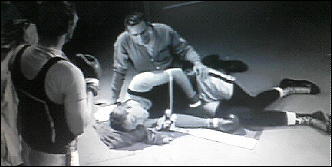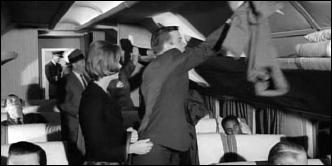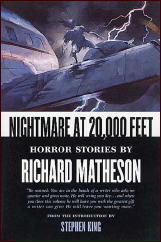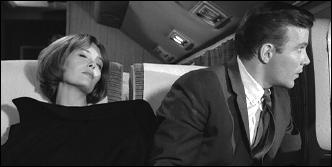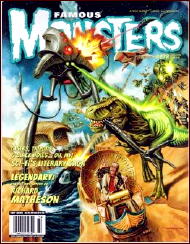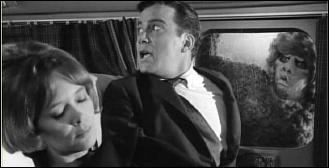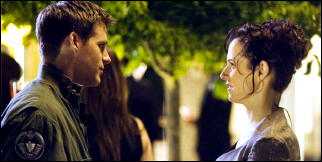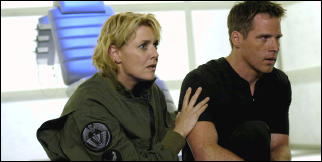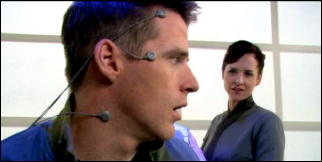TV FALL SEASON 2013-14 – MYSTERY, CRIME,
HORROR, ADVENTURE AND FANTASY SERIES
by Michael Shonk
MAJOR NETWORKS
MONDAY:
ABC: CASTLE returns for its sixth season in its same time slot at 10pm starting September 23rd.
CBS: HOSTAGES begins its limited series run starting September 23rd at 10pm. The series is about a Doctor who is scheduled to operate on the President of the United States when she learns kidnappers have her family and demand the President dies or her family will. February 24th the promising cyber-thriller INTELLIGENCE is scheduled to take over the time slot.
CW: BEAUTY AND THE BEAST returns on October 7th for its second season as cop (Beauty) and Doctor (Beast) continue their romance while trying to solve the murder of her mother without attracting the attention of Muirfield, a mysterious organization.
FOX: BONES returns September 16th for its ninth season at 8pm but will stay only until November 4th when it moves to Friday and new buddy cop show ALMOST HUMAN takes its place. From the people behind FRINGE, ALMOST HUMAN teams a reluctant human cop with an android cop that has feelings. Starting September 16th at 9pm will be the hour-long SLEEPY HOLLOW (which will be repeated on Friday). Ichabod Crane and the Headless Horseman adjust to the 21st Century as they resume their fight, while Crane’s new partner, a female black sheriff, tries to find out who is behind their return and why.
NBC: THE BLACKLIST debuts on September 23rd at 10pm, starring James Spader as a super criminal who has turned himself into the FBI to help stop another super criminal, but he will only deal with Elizabeth Keen (Megan Boone), a rookie FBI agent.
TUESDAY
ABC: MARVEL’S AGENTS OF S.H.I.E.L.D. premieres September 24th at 8pm. A special team of S.H.I.E.L.D. agents, lead by Phil Coulson (Clark Gregg) who was last seen dead in the hit movie THE AVENGERS, solve strange cases.
CBS: NCIS returns for its eleventh season September 24th at 8pm, last year’s top rated series will bid farewell to character Ziva David (Cote de Pablo). The same night has NCIS–LA back at 9pm for its fifth season. Followed at 10pm by my personal favorite PERSON OF INTEREST beginning its third season.
CW: THE VAMPIRE DIARIES spinoff THE ORIGINALS will premiere on Thursday October 3 then move to its regular spot Tuesday at 8pm on October 8th. SUPERNATURAL will start its ninth season on October 8th at 9pm.
FOX: BROOKLYN NINE-NINE premieres September 17th at 830pm. The new half-hour ensemble comedy focuses on the conflict between irresponsible but great cop (Andy Samberg) and his new by the book boss (Andre Braugher).
NBC: CHICAGO FIRE second season begins September 24th at 10pm.
WEDNESDAY
CBS: CRIMINAL MINDS returns for its ninth season on September 25th and will air at 9pm. The same day CSI: CRIMINAL SCENE INVESIGATION will air at 10pm. Its fourteenth season will be highlighted by a special 300th episode.
CW: ARROW, based on a comic book superhero begins its second season on October 9th at 8pm followed by new SF action series THE TOMORROW PEOPLE based on British TV series, about paranormal teens on the run from paramilitary group of scientists.
NBC: REVOLUTION debuts September 25th at 8pm where it hopes to find that spark that made it an early hit last season before it began to fade. LAW AND ORDER: SVU will begin its fifteenth season on the same day at 9pm. New remake IRONSIDE will join the schedule on October 2nd at 10pm.
THURSDAY
ABC: ONCE UPON A TIME IN WONDERLAND begins its limited series run at 8pm. The first eight episodes of the hour-long fantasy adventure start October 10th. January 2nd new reality series THE QUEST takes over the time slot until WONDERLAND returns for its final four episodes of the season. At 10pm the political thriller SCANDAL is back for its third season October 3rd where it will air 12 to 13 episodes, be replaced by another to-be-named limited series, and then return for its final 12 to 13 episodes.
CBS: ELEMENTARY, Sherlock Holmes and Dr. Joan Watson return for a second season on September 26th at 10pm.
CW: THE VAMPIRE DIARIES rises for its fifth season on October 3rd at 8pm.
FRIDAY
CBS: HAWAII FIVE-O will start its 4th season on September 27th at 9pm. BLUE BLOODS return for its 4th season at 10pm.
FOX: BONES will move from Monday to Friday at 8pm on November 8th. SLEEPY HOLLOW reruns end (original episodes continue on Monday) and is replaced by comedies.
NBC: GRIMM third season debuts October 25th at 9pm with new limited series DRACULA on at 10. When DRACULA run finishes, period pirate limited series CROSSBONES will take over.
SATURDAY
CBS and NBC will feature repeats on Saturday, with CBS 9 to 10pm called ENCORE CRIMETIME.
SUNDAY
ABC: ONCE UPON A TIME is back for its third season beginning September 29th at 8pm with the third season of REVENGE following at 9pm. Both will air 12 to 13 episodes then be replaced by a limited series to-be-named and return March 9th for another 12 to 13 episodes. Also on March 9th new series RESURRECTION about the dead from Arcadia Missouri beginning to return alive at the age they died, starts its 12 to 13 episodes run.
CBS: THE GOOD WIFE starts its fifth season on September 29th at 9pm. THE MENTALIST follows with its sixth season at 10pm. The cop show will return with major cast changes and some suspects, one of who is (maybe) the Red John.
Confused yet? Wait until the networks start cancelling shows and shuffling series around.
As you can tell the limited series (aka mini-series) is back on the major networks. The reasons range from movie actors such as Kevin Bacon (THE FOLLOWING) and Greg Kinnear (RAKE) willing to do a TV series but only 15 episodes rather than the usual 24 to the networks wanting to eliminate rerun breaks during serial series as well as extend original programming for the entire year. Oh, just because it is a “limited series†doesn’t mean there are not plans for a second season (even with HOSTAGES).
Among the yet to be scheduled limited series are CW’s NIKITA (final six episodes), FOX’s THE FOLLOWING and new lawyer series RAKE
MIDSEASON BENCH:
ABC: KILLER WOMEN and MIND GAMES.
CBS: RECKLESS.
CW: THE 100 is a post-apocalyptic adventure based on Kass Morgan’s book.
FOX: GANG RELATED.
NBC: HANNIBAL (returns for season two), BELIEVE, CRISIS, and CHICAGO PD.
CABLE TV
ABC FAMILY: RAVENSWOOD, spin-off from PRETTY LITTLE LIARS about a town under a deadly curse. Premieres in October.
A&E: BONNIE AND CLYDE, mini-series airs over two nights sometime in October on A&E, History and Lifetime network.
AMC: WALKING DEAD season 4A begins Sunday October 13th at 9pm, followed by the recap show called TALKING DEAD at 10pm.
BBC AMERICA: LUTHER returns for a short third season airing September 3rd through 6th at 10pm. ATLANTIS, a fantasy series based on Greek mythology, airs Saturday starting November 23rd, the same night the special DOCTOR WHO episode celebrating fifty years of the time travel adventure series airs. RIPPER STREET second season begins Sunday, December 1st at 10pm.
FX: SONS OF ANARCHY season six starts Tuesday, September 10th at 10pm. AMERICAN HORROR STORY: COVEN season three airs at 10pm starting Wednesday, October 9th.
HBO: BROARDWALK EMPIRE season four airs Sunday, September 8th at 9pm. TREME begins it fourth and final season December 1st, Sunday at 9pm.
LIFETIME: WITCHES OF EAST END, based on the book by Melissa de la Cruz, starts Sunday, October 6th at 10pm.
PBS: FOYLE’S WAR season seven airs on MASTERPIECE MYSTERY at 9pm, September 15th through 29th.
SHOWTIME: HOMELAND season three airs Sunday at 9pm beginning September 29th.
SYFY: HAVEN season four starts Friday, September 13th at 10pm.
TNT: COLD JUSTICE, Dick Wolf’s reality show about solving real unsolved cases, begins Tuesday September 3rd at 10pm. MAJOR CRIMES is back for season 2B Monday November 25th at 9pm. BOSTON’S FINEST returns for its second season Tuesday at 9pm on November 26th. MOB CITY debuts December 4th Wednesday at 10pm. Based on the book, L.A. NOIR: THE STRUGGLE FOR THE SOUL OF AMERICA’S MOST SEDUCTIVE CITY by John Buntin, the series is developed by Frank Darabont (WALKING DEAD).
USA: WHITE COLLAR returns for season five on October 17th Thursday at 9pm. COVERT AFFAIRS season 4A ends September 17th and returns with season 4B Thursday at 10pm on October 17th. PSYCH: THE MUSICAL, a special episode of the series PSYCH airs Sunday December 15th at 9pm.
INTERNET
LINK TV: BORGEN season three begins October 4th.
MHz NETWORKS: Every night in September the network offers a different international mystery:
Sunday: DETECTIVE MONALBANO, Italian mysteries.
Monday: HALF BROTHER a Norwegian family drama.
Tuesday: ANTIGONE 34, a French action series
Wednesday: SEBASTIAN BERGMAN is a Swedish series about a police profiler.
Thursday: DOLMEN is a French gothic drama.
Friday: BLOOD ON THE DOCK, a gritty French police procedural.
Saturday: ARNE DAHL, Swedish thriller.
Sources:
Network websites
Deadline.com
EW.com
TheFutonCritic.com
HollywoodReporter.com
TVLine.com
YouTube.com
